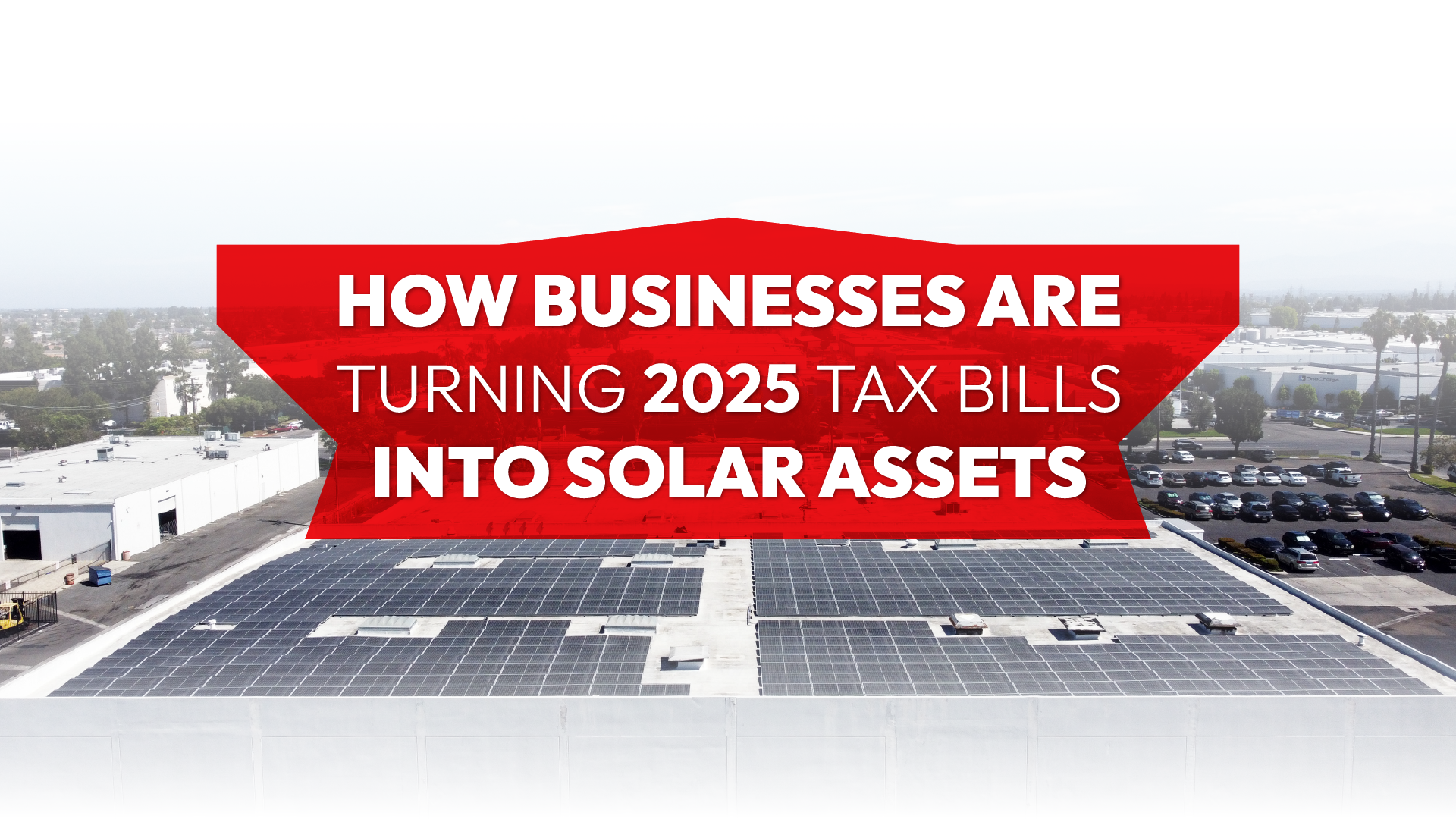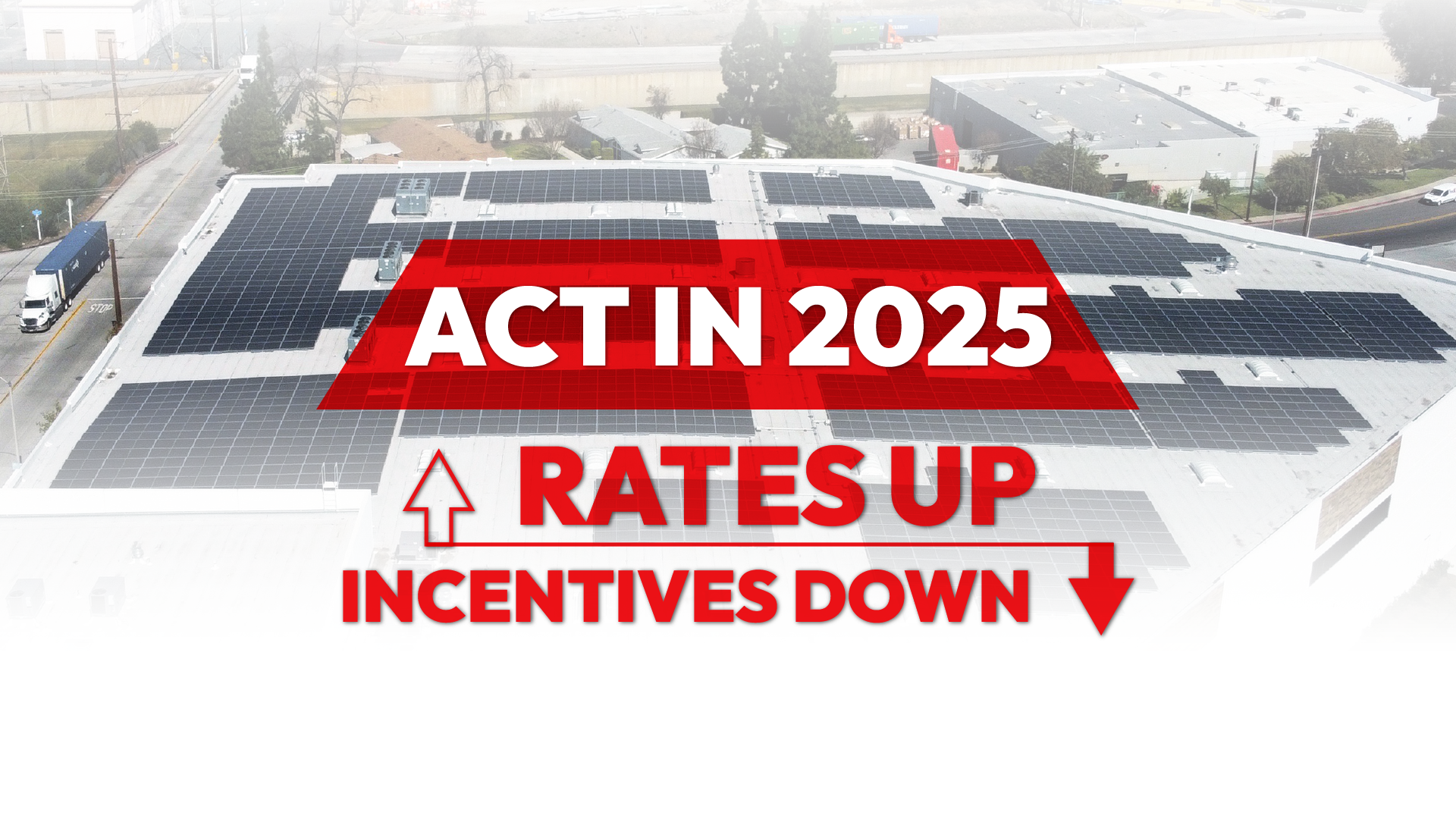The Case for CRE Property Owners & Managers Installing Commercial Solar on Buildings with Triple Net (NNN) Leases
Commercial real estate (CRE) property owners with Triple Net (NNN) Leases have an exciting opportunity to raise income with commercial solar. Property owners and managers are constantly looking for ways to increase income. Generating independent power with commercial solar and selling to tenants grows income and adds to the property’s value and marketability.
California electricity costs continue to rise. The state’s Investor Owned Utilities (IOU’s) outpace the rest of the US in electricity price growth and shift time of use to increase profits and pay for outdated grid maintenance.
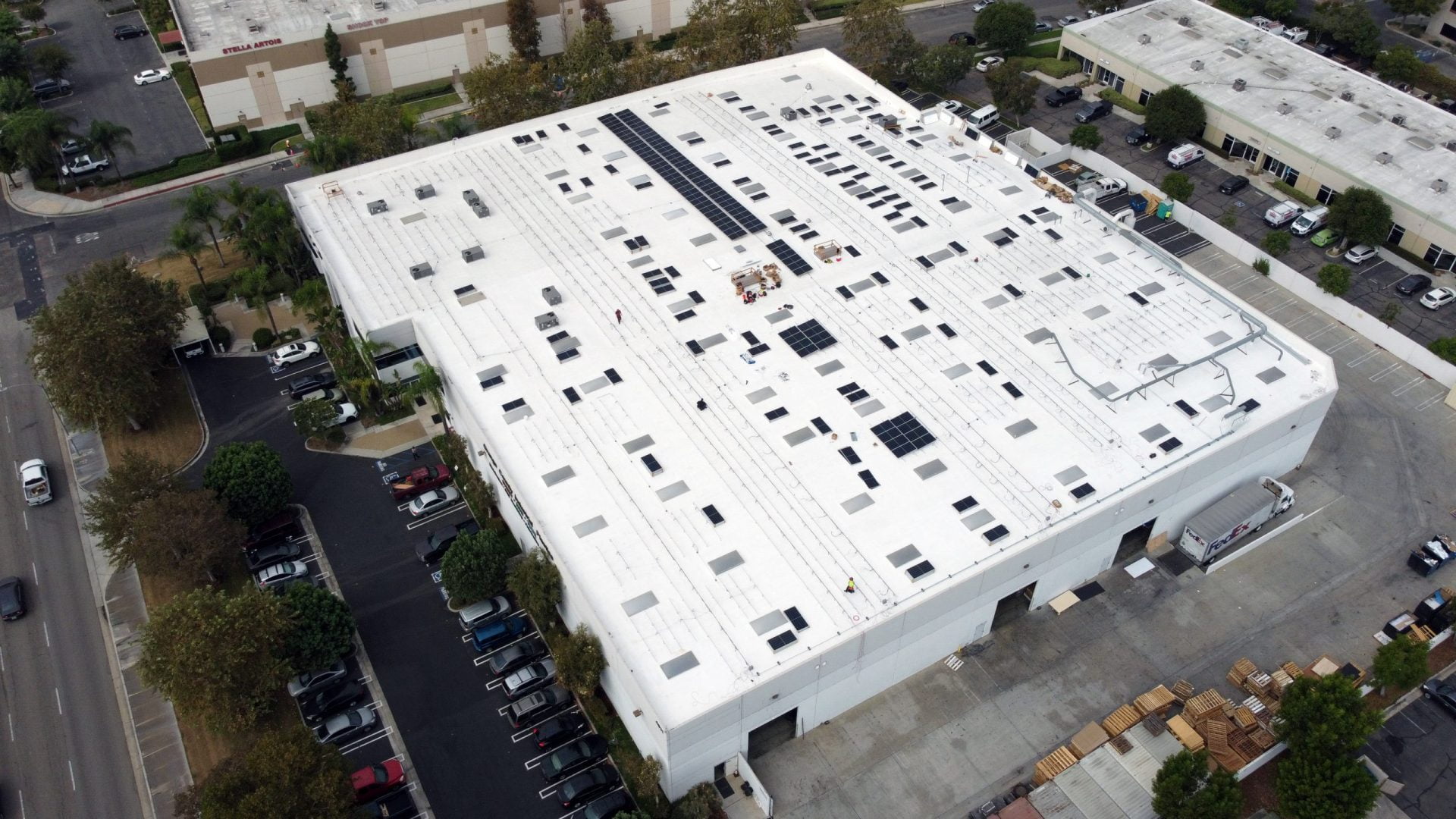
How Does It Work?
Installing commercial solar is not the same as residential systems. CRE owners should be aware there is a big difference in quality and performance between residential and commercial grade solar equipment.
The owner or manager starts by hiring a licensed commercial solar contractor, project developer or EPC. Contractors like Revel Energy specialize in C&I properties, known for more complex energy profiles and usage than typical residential installs. Contractors, like Revel, start by analyzing the business’ energy usage referencing 35,000 data points (Revel takes a unique approach analyzing energy usage every 15 minutes from the last 12 months) to create a custom-tailored system.
The system utilizes available square footage whether it’s rooftop, carport or canopy solar. To offset as much energy, only commercial specialists understand the unique factors at play for C&I buildings. The goal is to maximize the property owner’s ROI.
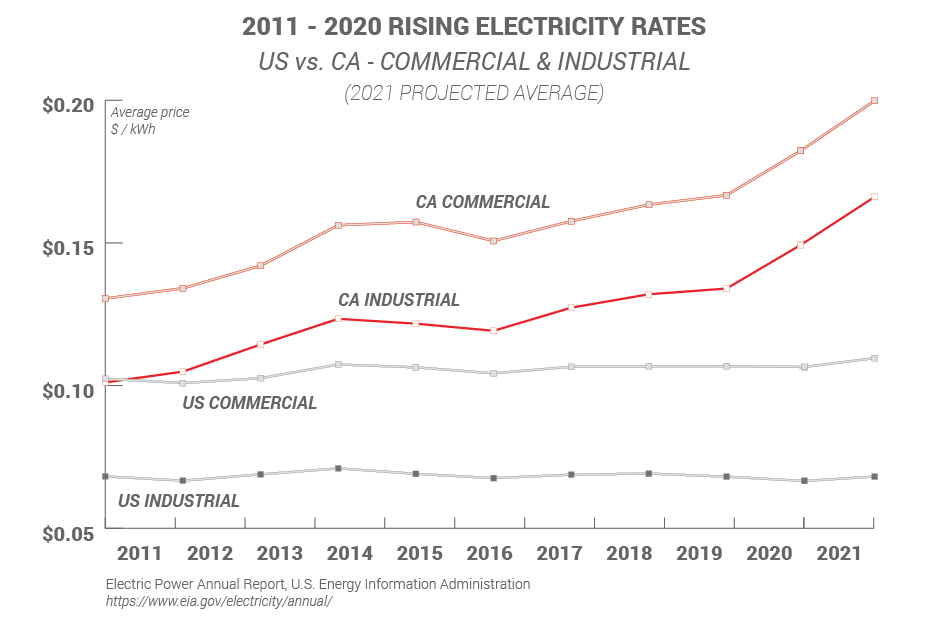
It starts with planning, then moves to permitting, installation, and monitoring as needed. Most CRE owners want a “turnkey” service. Once the system is functional, the sun generates power throughout the day offsetting the building’s usage. If the building uses more power than currently generating, it supplements from the grid. For added electricity savings, energy storage is ideal for supplying power when the sun is not shining.
For property managers with several tenants, third party software make it easy to portion out electricity usage and bills. It is important to go with a professional’s recommendation when choosing this service.
More and more businesses throughout California have realized the hidden potential within their properties. In 2022, California’s electricity demand was briefly 100% supplied by renewable energy, two-thirds of that being distributed solar generation.
What Are The Benefits?
Property Owner
Generating their own electricity lowers costs the building owner pays for utilities. Lowering costs increases Net Operating Income. This grows cashflow and leaves more money available for other investments or improvements.
On average, commercial solar lowers electricity bills by 50-70% over the life of the system.
CRE owners also gain more property value. Adding new sustainable technology increases a building’s value in several ways, most tangibly by increasing annual income which is then divided by the cap rate thus growing property value.
Property Manager
Sustainable green buildings are more attractive to prospective tenants. This adds a competitive advantage over competitors.
For existing tenants (i.e. a tenant 4 years into a 10-year lease), solar provides an opportunity to extend leases. This increases the Net Present Value (NPV).
Renewable energies with energy storage will reduce tenant complaints primarily caused by electrical outages. Creating their own reliable electricity backup source is an option for further reducing reliance on public utilities’ outdated infrastructure.
Tennant
Over half of Fortune 500 companies have pledged to shrink their carbon footprint. These companies seek real estate in line with their green initiatives.
The marketability of a commercial solar system translates well to consumers. Tenants have the option to externally market their “social responsibility” to consumers.
According to the Building Owners Managers Association, millennials will make up 75% of the workforce by 2025. Furthermore, 59% of millennials are more apt to be attracted to sustainable businesses over the alternative.
Grow Net Operating Income
In some cases, building owners will sell electricity back to the tenant at a slightly lower rate than IOU’s. This lowers the tenants’ operating costs giving them more cash flow to grow their business. Commercial solar has proven itself successful throughout the industry with triple net leases allowing more businesses to access the savings.
Case Studies
Manufacturing
West Coast Gasket Co. manufactures specialty gaskets and other metal products at their Brea, California location. This industry leader is using their commercial solar installation to lower operating costs and electricity usage.
“They were using about 370,000 kWh,” explains Ken Fournier, of Revel Energy. “We instantly knew rooftop commercial solar would play a huge role in lowering their costs.”
A 207.4 kW commercial solar system was installed. The system produces an estimated 315,010 kWh annually (about $50,000 worth of electricity). In the first year, West Coast Gasket is expected to save 85% of their power usage from SCE.
Nearly 80% of the 47,000 sq. ft. roof was equipped with 680 monocrystalline solar panels. “Monocrystalline solar panels are known for higher efficiency and sleeker aesthetic” according to Energysage, a leading solar blog. Each panel produces 305 watts under ideal conditions.
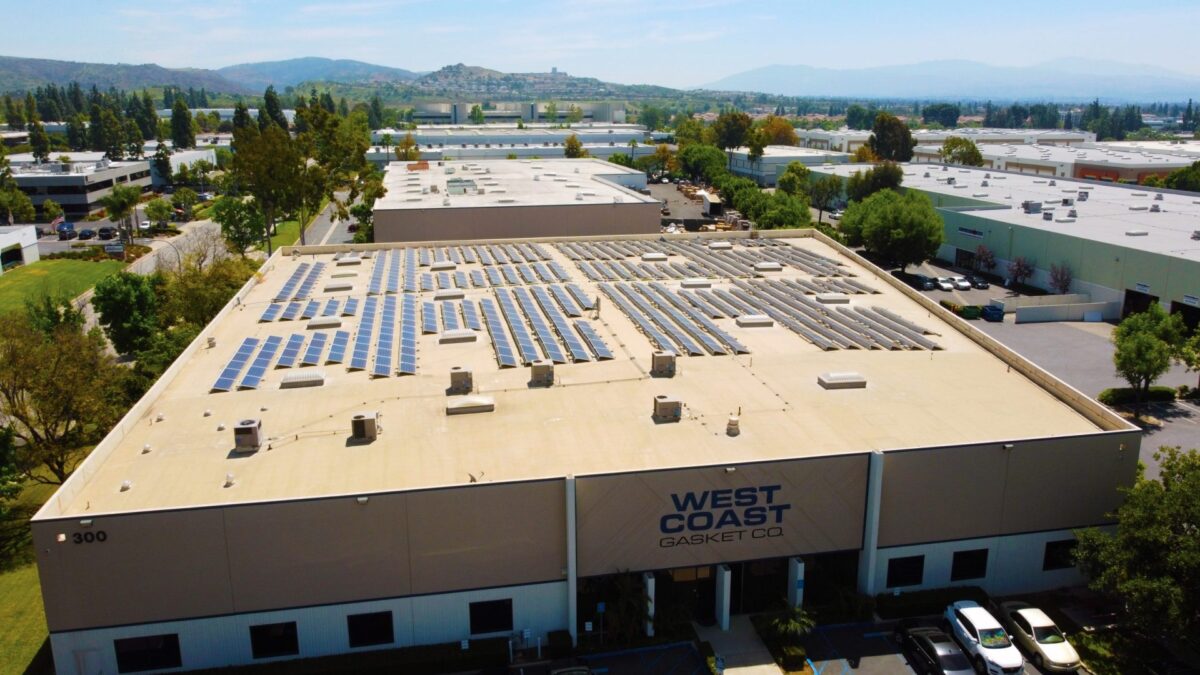
Note: The energy agreement between landlord and tenant was not disclosed. However, this would be a great opportunity for the landlord to make extra income and tenant to save on discounted electricity costs.
Office Buildings
Comprised of five (5) two-story office buildings, each building at the Corporate Business Park in Irvine, CA uses varying amounts of electricity. The entire park uses over two (2) million kWh of electricity paid for by the property owner.
Revel Energy installed a 335.16 kW system consisting of 931 monocrystalline solar panels shared among the five rooftops. The system generates 447,315 kWh annually, saving owners $49,543 in the first year alone. With California’s steady rising electricity rates, Corporate Business Park is expected to save $2,363,833 in future electricity costs.
Using an average CAP Rate of 5% (actual rate unknown, estimated for scenario purposes) the commercial solar system adds $990,000 to the total property value.
Commercial Solar Financing
Commercial solar and other renewable technologies are more affordable than ever. Installed solar costs have decreased on average 10% each year since 2001. With the 26% Federal Tax Credit, accelerated depreciation, bonus depreciation, and other incentives, investing in solar is a fraction of the upfront cost compared to 15 years ago.
For businesses that don’t want to make an upfront investment, smart financing options are available.
Traditional Bank Financing: Owners with strong financials self-finance through bank backed debt. Owners with strong banking history may have more options for financing with more attractive terms.
Lease-To-Own: This is a great option for businesses that offset enough energy cost to cover the monthly lease payment. In this case, the business stay cash flow positive without impacting it operating expenses.
CPACE: Commercial Property Assessed Clean Energy financing is growing in popularity with more and more states offering the option. Commercial PACE is tied to the property and does not rely on the owner’s creditworthiness. The transfer-ability of PACE financing is enticing for an owner looking to sell. Payments generally transfer to new owners without issue. PACE financing and its payments are kept off the balance sheet. This is nice especially for property owners looking to borrow more money for other investments.
Other Financing: Financing is a great option for companies that wish to not layout capital. Consulting a financing professional is highly recommended.
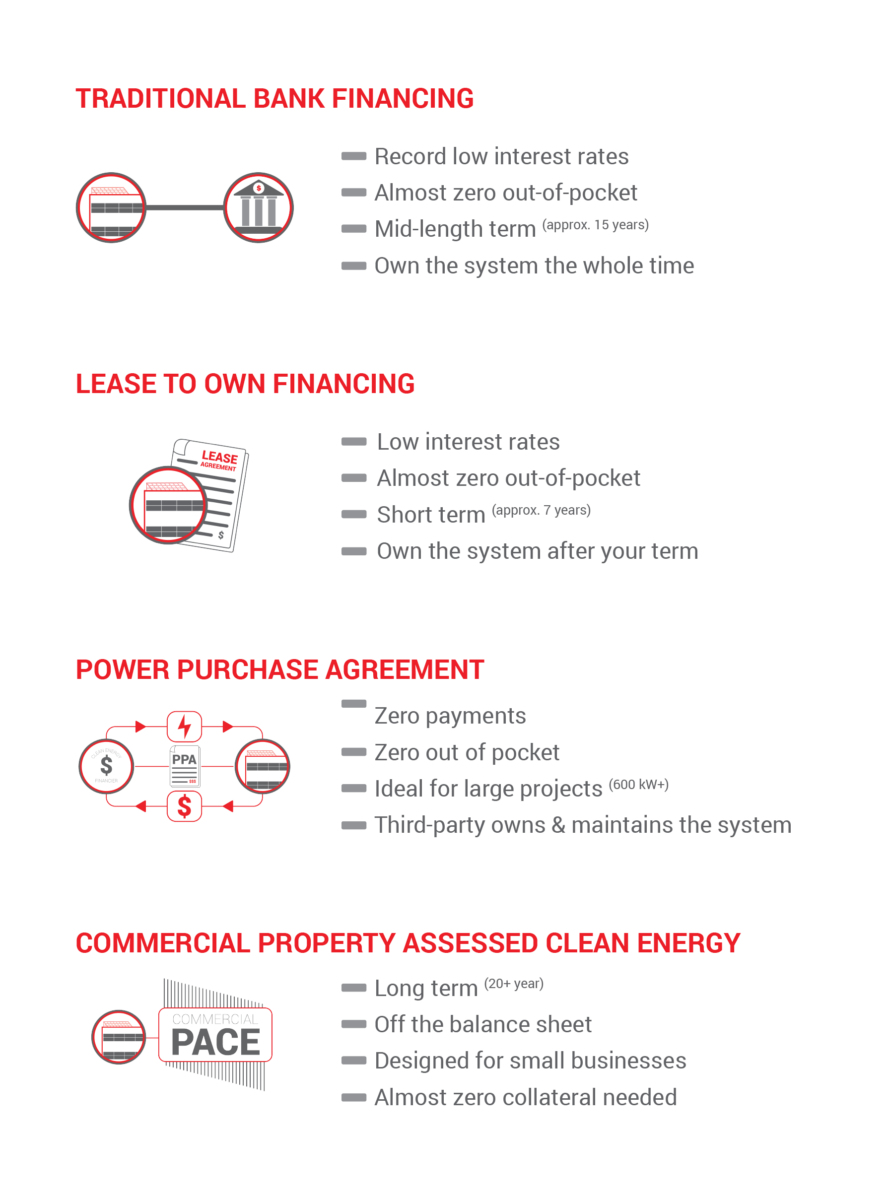
Best Installation Methods
Make sure it’s turnkey: Property owners need to make sure the contractor or EPC they choose will provide complete service from start to finish. Commercial installations require much more upfront planning to design the appropriate system to meet the owner’s goals.
The process can be daunting, hiring a turnkey contractor will reduce the owner’s involvement. This makes the process easier for everyone.
Compare quotes: Prudent businesses will always collect quotes. Price is not always the deciding factor. Owners need to make sure the proposed plan is appropriate for their building. Often, the cheapest quote misses several key factors.
Use commercial grade: EPC’s, like Revel Energy, specialize in C&I properties. The components and equipment used for each installation are handpicked for that specific property. One factor is constant, always choose commercial grade.
Design to be maintenance friendly: Even the highest quality system will require some degree of maintenance. Accessing each panel should be easy, safe and code compliant.
Inspect the roof structure first: For rooftop solar, the roof is the “foundation.” Older roofs need to be inspected for structural integrity. If a roof needs repair, it is best to bundle with the solar installation. In many cases, roof work can be included in the 26% Federal Tax Credit and financing options. Revel is not a tax professional so clarifying with their tax advisor is highly recommended.
Design for the elements: Environmental factors like wind and seismic activity should be included in the planning and design process. This is where C&I specialists are valuable.
Conclusion
For triple net leases, Commercial solar and other renewable technologies offer CRE property owners an opportunity to increase cash flow and property values. Like all good investments, the process requires a high level of due diligence, but the ROI is substantial.
The alternative is to continue paying increased utility costs. CRE owners and property managers are urged to at least explore the opportunity. Contact a Revel Energy C&I specialist today.
ROOFTOP SOLAR
Commercial grade rooftop solar is ideal for: manufacturing, warehousing, logistics, industrial, retail, hospitality buildings and more with over 10,000 sq. ft. rooftops.
CARPORT SOLAR
Free standing carport solar generates added solar power for properties with limited rooftop space. Added benefits include shading and protection for employees vehicles.
ENERGY STORAGE
Crucial for reducing peak demand charges. Automated to supply electricity when your panels won’t. Energy storage is ideal for businesses that incur significant peak hour charges
LED LIGHTING RETROFIT
Generating independent solar power is one piece of the puzzle. Energy saving equipment like highly efficient LED Lighting completes the system. Significantly reduce energy usage.
About Revel Energy
Revel is on a mission. Dedicated to renewable energy solutions since 2009, Revel Energy was formed to provide Commercial, Industrial and Agricultural businesses with alternative energy beyond solar. Revel stands out from the competition by paying attention to what makes good business sense to each individual client, implementing a wider range of technologies to free up capital and make businesses sustainable and more profitable.
OUR SERVICES
TURNKEY COMMERCIAL GRADE SOLAR, ENERGY STORAGE, LED LIGHTING AND MORE.
PROFESSIONAL GUIDANCE
CUSTOM TAILORED PLANNING
CONSTRUCTION & INSTALLATION
CSLB #1038433
Client Testimonial: Kelemen Company
Corporate Business Park in Irvine, CA has created significant electricity cost savings through commercial solar installed across the 5-building business park.
Client Testimonial: Tice Gardner & Fujimoto LLP
See how this CPA firm saved on electricity and gained valuable tax credits through commercial solar that they used to keep cash in the businesses.


